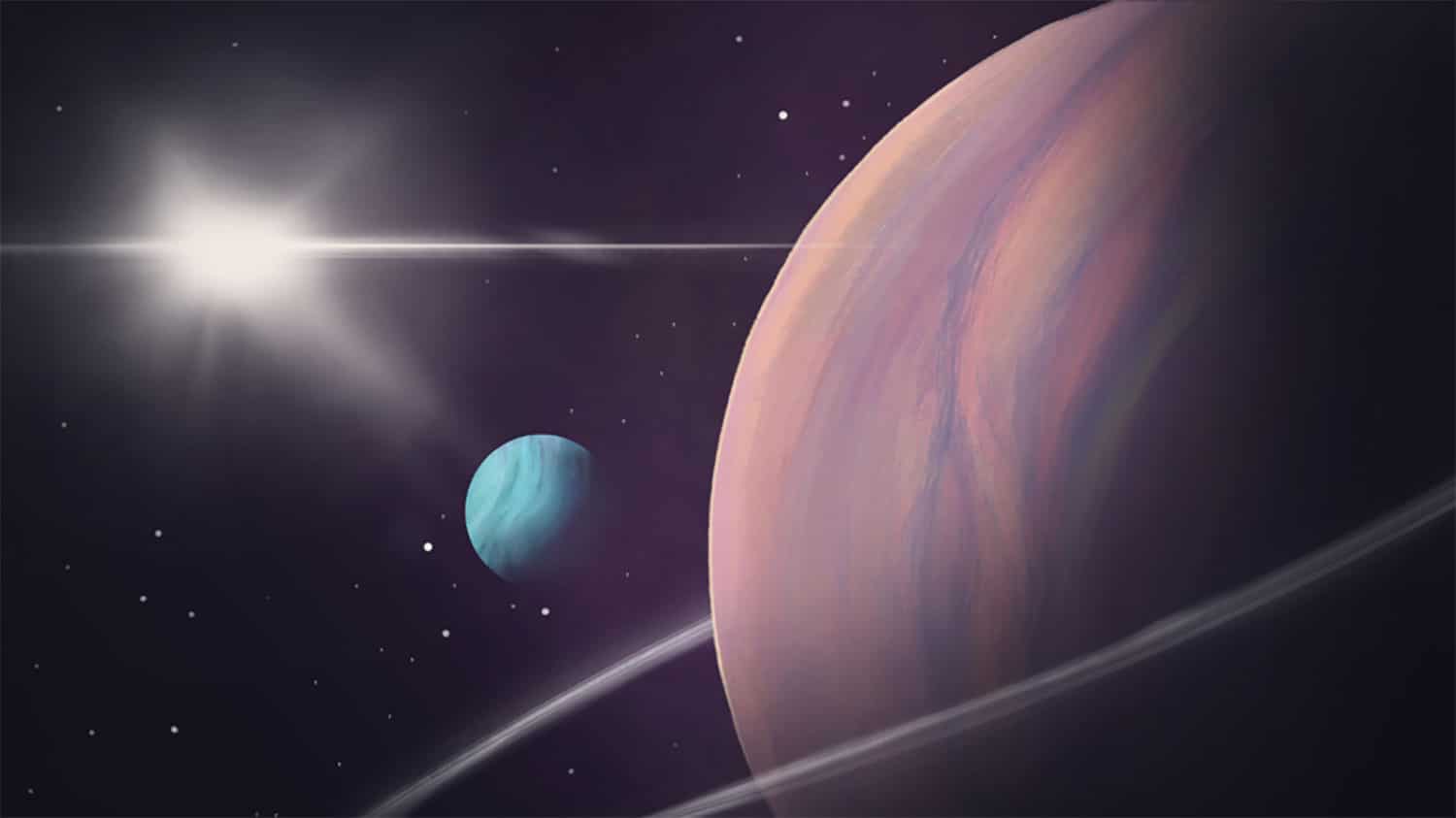In a project aimed at democratizing science and fostering educational enrichment, a group of high school students from the Galaxy Explorer program at the Chabot Space & Science Center in Oakland, California, made contributions to the field of exoplanet research. Researchers from the SETI Institute worked with the students to use backpack-sized digital smart telescopes provided by Unistellar; these young citizen scientists played a role in observing and confirming the nature of a warm and dense sub-Saturn planet, known as TIC 139270665 b, orbiting a metal-rich G2 star.
“By using new technology available with digital smart telescopes, we can take large steps towards the democratization of modern astronomy and education since the outcomes of initiatives like this can contribute to both astronomical research and education with easy-to-use and increasingly accessible technology,” said Dr. Dan Peluso, SETI Institute Affiliate. “In such endeavors, participants are ‘learning by doing’ and the doing is not some meaningless task. Instead, the ‘doing’ is the astronomical data collection, which in the past has been mostly left to professional astronomers and their observatories, or with highly skilled citizen astronomers with technical telescope setups. With TIC 139270665 b, our high school students had a challenging but meaningful task — capture the second transit of an exoplanet with a poorly understood orbital period. These students were engaged, inspired, and were easily able to setup and control the Unistellar telescopes with very little training. Citizen science opportunities like this and new technology with digital smart telescopes represent a fundamental shift and revolution for how we can approach and perform astronomical research moving forward.”
The discovery of TIC 139270665 b, the densest known warm sub-Saturn within the TESS (Transiting Exoplanet Survey Satellite) family, marks a milestone in exploring exoplanets. The initial clues of TIC 139270665 b’s existence was initially discovered by a citizen science group inspecting TESS photometric data, highlighting the role of public engagement in advancing scientific knowledge. Through further study by analyzing radial velocity data from the Lick Observatory, Peluso and Dr. Paul Dalba and their team were able to confirm that TIC 139270665 b is indeed a planet and even has a sibling planet, TIC 139270665 c. The photometric data from the global Unistellar Citizen Science Network, including the Galaxy Explorers, was not able to definitively confirm a second transit with 100% confidence, however, their data was useful for the exoplanet study since it helped to rule out times when a transit was not happening and because it helped the scientists to learn valuable lessons about how to approach citizen scientist campaigns such as this in the future.
The SETI Institute is the scientific partner of the Unistellar network, known for its global distribution of citizen astronomers. Citizen astronomers with Unistellar telescopes collected data that furthered the understanding of this exoplanet’s orbital period and characteristics as part of the Unistellar Network Investigating TESS Exoplanets (UNITE) program, a NASA citizen science project that is part of the Unistellar Transiting Exoplanets campaign. This effort, funded by the Gordon and Betty Moore Foundation and NASA, contributes to the scientific community’s knowledge of planetary formation and evolution and is an educational initiative integrating young students into astrophysics data collection.
The high school students’ involvement in this research underscores the potential of hands-on science education to motivate and engage young minds. Through their participation, students gained real-life skills and insights into the scientific process, from planning and conducting observations to analyzing data and contributing to a scientific publication, on which they are all co-authors. This experience demonstrates the power of blending educational empowerment with research, allowing students to contribute to our understanding of the universe.
“This experience further propelled my fascination with the subject of astronomy, specifically in regard to exoplanetary science,” said Serina Jain, student at San Francisco University High School. “Working on this observation fueled my joy of engaging in astrophysics research and my plans to pursue this as a major in college, as well as my love of sharing astronomy with others. Since helping Dr. Peluso with this observation, I have been able to bring even more passion and knowledge to my role as co-founder and leader of the San Francisco University High School Astronomy Club. This past summer, I went on to partake in a 7-week lab internship with the California Institute of Technology (Caltech) Mawet Astrophysics Lab, researching in exoplanet detection by way of direct imaging, using coronagraphy and spectroscopy. My inspiration to seek this involvement largely stemmed from my overwhelmingly positive experience working on this observation with Dr. Peluso.”
This initiative is a testament to the collaborative spirit of the scientific and educational communities. It showcases how integrating citizen science and education can lead to discoveries and inspire the next generation of scientists and explorers. The high school students’ enthusiasm for this project is a beacon of hope for the future of scientific inquiry and education, proving that young minds can contribute to our understanding of the cosmos when given the opportunity.
As we continue to explore the vast expanse of space, the contributions of these young citizen scientists remind us of the pivotal role of education and public engagement in the pursuit of knowledge and discovery. The future of astronomy and space exploration is bright, with students like those in the Galaxy Explorer program leading the way toward new horizons and uncovering the mysteries of the universe.
This research was funded by the Gordon and Betty Moore Foundation (#10561) and NASA Citizen Science Seed Funding Program grant (Goddard-80NSSC22K113), with additional funding from the NSF Astronomy and Astrophysics Postdoctoral Fellowship (AST-1903811) and the 51 Pegasi b Postdoctoral Fellowship, courtesy of the Heising-Simons Foundation.
Note: This article have been indexed to our site. We do not claim legitimacy, ownership or copyright of any of the content above. To see the article at original source Click Here












